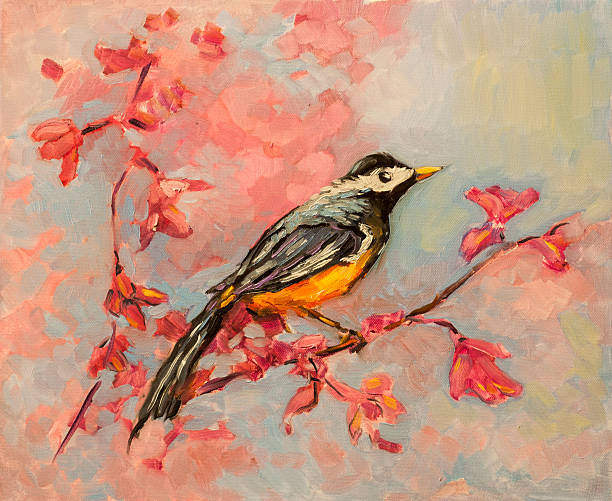Checking out All About Oil Paints: A Guide to Understanding Their Charm and Value
Oil paintings have actually mesmerized audiences for centuries, using a look right into the artistic mastery of different eras. Their rich history is linked with cutting-edge methods and extensive emotional expression. Comprehending the products and methods behind these art work can boost recognition. Additionally, the market for oil paintings provides opportunities for capitalists and enthusiasts alike. As one explores this remarkable world, the concern emerges: what makes an oil painting genuinely valuable?
The Background of Oil Painting: A Journey Through Time
Oil painting has roots that date back to old times, it absolutely prospered throughout the Renaissance, when artists found its versatility and rich shade possibility. Early examples can be mapped to the 7th century, with methods progressing notably throughout cultures. The medium became noticeable in Northern Europe in the 15th century, particularly through the works of musicians like Jan van Eyck, who spearheaded its use for in-depth realism and dynamic hues. This period marked a departure from tempera paints, permitting greater depth and structure. As oil paint spread, it affected plenty of musicians, bring about work of arts by renowned numbers such as Leonardo da Vinci and Rembrandt. The tool's tradition continues, forming the art globe well right into modern-day times.
Comprehending Oil Repaints: Products and Techniques
As musicians discover the globe of oil paints, they encounter a varied selection of products and techniques that define this medium. The primary components of oil paint include pigments, which offer shade, and drying out oils, such as linseed, that bind the pigments and facilitate application. Different additives can change the paint's texture and drying out time, boosting convenience. Methods like glazing, where transparent layers are accumulated, and impasto, which entails applying thick paint, permit different visual effects. Additionally, the use of brushes, palette knives, and even fingers can create unique textures and coatings. Comprehending these techniques and materials allows artists to totally share their imagination and accomplish the desired effect in their art work.
The Role of Shade in Oil Paints
Color plays a pivotal duty in oil paintings, affecting both aesthetic charm and psychological vibration. Recognizing color theory basics, consisting of the partnerships in between tones, can improve a musician's capacity to share mood and atmosphere. In addition, mastering shade mixing methods permits better deepness and splendor in a painting's combination.

Color Concept Fundamentals
Recognizing shade concept is essential for musicians dealing with oil paints, as it creates the structure for developing aesthetically engaging and unified structures. Shade concept encompasses the research of just how shades interact, the color wheel, and the relationships between primary, second, and tertiary shades. Musicians utilize corresponding shades to boost contrasts and produce prime focus, while analogous colors promote unity and cohesiveness within a piece. Furthermore, the concepts of warm and great shades influence the assumption of deepness and space in a paint. Understanding these concepts enables musicians to control color properly, guiding the visitor's eye and connecting their desired message. Mastery of color concept eventually enhances a musician's ability to convey feelings and ideas via their work.
Emotional Influence of Shade
The psychological impact of shade in oil paints plays an essential function in just how audiences link and regard with artwork. Shades evoke particular feelings and moods, affecting the viewer's psychological state. For instance, cozy hues like oranges and reds can create a sense of heat and energy, while trendy tones such as blues and eco-friendlies typically stimulate peace or self-questioning. Artists tactically pick shade combinations to improve narrative aspects, guiding the target market's psychological trip. The saturation and comparison of shades better intensify these effects, drawing focus and creating emphasis. Eventually, the interaction of shades in oil paints not only enhances their aesthetic appeal however additionally works as a powerful medium for emotional expression, enhancing the audience's experience and interpretation.
Color Mixing Techniques
While numerous aspects of oil painting add to the general composition, understanding color blending strategies is essential for attaining wanted results and deepness. Shade blending can be come close to with different approaches, including the subtractive and additive processes. Additive blending includes combining colors of light, while subtractive mixing depends on pigments, where colors mix to create brand-new shades. Musicians usually make use of a limited combination to produce harmonious works, understanding the relationships between primary, second, and tertiary colors. Techniques such as glazing and scumbling further improve depth and luminance. By skillfully mixing colors, an artist can evoke feelings, produce prime focus, and attain a sense of realistic look, inevitably boosting the painting's visual and psychological influence.
Famous Oil Painters and Their Iconic Works

Famous for their mastery of shade and technique, oil painters have developed some of the most renowned art work in background. Prominent musicians like Vincent van Gogh astounded audiences with his emotive brushwork in "Starry Evening," while Claude Monet's "Impact, Sunup" laid the foundation for Impressionism. Leonardo da Vinci's "Mona Lisa" remains a long-lasting icon of imaginative wizard, showcasing his ability in capturing human expression. At the same time, Rembrandt's "The Evening Watch" highlights his ingenious use light and darkness. Other significant numbers consist of Pablo Picasso, who changed contemporary art with his strong trial and error in jobs like "Les Demoiselles d'Avignon," and Georgia O'Keeffe, whose vibrant depictions of blossoms and landscapes assisted define American modernism. Each artist's special style contributed substantially to the oil paint landscape.
Just how to Examine the High Quality of an Oil Paint
Evaluating the high quality of an oil painting includes a mindful evaluation of craftsmanship methods, as well as an evaluation of shade and composition. Observing brushwork, layering, and the application of paint can reveal the musician's skill degree. Furthermore, the interaction of colors and the overall plan of aspects add significantly to the paint's aesthetic worth.
Analyzing Workmanship Techniques
A careful analysis of craftsmanship techniques is vital for establishing the quality of an oil painting. Critics need to initially examine the application of paint; thick, textured brushstrokes may recommend a competent hand, while extremely uniform applications can suggest a lack of deepness. oil paintings for sale. The layering method is also important; the visibility of glazes and varied density can enhance brightness and intricacy. In addition, the quality of the materials made use of, such as the canvas and oil paintings for sale pigments, plays a considerable duty in longevity and general aesthetic. Focus to information in components like edges and changes between shades mirrors the artist's dedication to their craft. Eventually, these methods add to the painting's emotional effect and market value, functioning as indications of the musician's skill and intent
Examining Shade and Make-up
While evaluating the top quality of an oil painting, one need to concentrate on the interaction of color and composition, as these components are fundamental to the artwork's total effect. Shade options can establish and stimulate feelings state of mind; therefore, the musician's palette must be checked out for consistency and contrast. A well-balanced make-up routes the viewer's eye and produces a sense of unity. Artists usually utilize methods like the guideline of thirds or leading lines to enhance visual rate of interest. Furthermore, using light and shadow can include deepness, improving the three-dimensionality of the paint. Eventually, an effective oil painting weds color and make-up, involving the viewer and welcoming a much deeper admiration of the artist's vision and technique.
Taking care of and Preserving Oil Paintings
Proper care and conservation of oil paints is vital for keeping their stability and long life. To protect these art work, it is important to present them away from straight sunlight, which can create fading and discoloration. Maintaining a secure environment with regulated temperature and moisture additional aids in preventing damage. Cleaning must be done delicately utilizing a soft, dry towel, preventing any harsh chemicals that can harm the paint or varnish. Regular inspections for indications of wear and tear, such as flaking or splitting, are advisable. When carrying or storing oil paintings, correct padding and framing are necessary to stay clear of physical injury. Inevitably, attentive care adds to the aesthetic charm and worth of oil paintings over time.
The Market for Oil Paintings: Investing and collecting
Comprehending the market dynamics for oil paintings is important for enthusiasts and financiers alike. The worth of these artworks is influenced by different factors, including the musician's reputation, historic relevance, and existing trends. Collectors frequently seek pieces that reverberate personally while considering prospective appreciation in value. Auctions and galleries work as primary places for purchasing and selling, with prices rising and fall based upon demand and rarity. Buying oil paints requires research into the market, in addition to an understanding of credibility and provenance. Furthermore, arising musicians might supply chances for considerable returns, while developed names can regulate high rates. Generally, a tactical strategy to accumulating can yield both aesthetic satisfaction and financial rewards.

Regularly Asked Questions
What Are the Environmental Effects of Oil Paint Materials?
The ecological influences of oil paint materials include the release of unstable natural compounds (VOCs), hazardous waste generation, and source removal for pigments. These variables add to pollution and ecological degradation, increasing concerns among eco conscious musicians and consumers.
Exactly How Do Different Canvases Affect Oil Painting Results?
Various canvases influence oil painting results substantially. Absorbency, structure, and surface top quality can alter paint application, drying times, and shade vibrancy. Musicians usually choose particular canvases to accomplish preferred results and enhance their creative expression.
Can Oil Paintings Be Brought Back if Harmed?
If damaged, Oil paintings can certainly be brought back. Expert conservators use different techniques to repair splits, tidy surface areas, and address staining, guaranteeing that the art work preserves its original beauty and worth for future generations.
What Are the Signs of an Original Oil Paint?
The signs of an original oil painting consist of noticeable brush strokes, appearance variants, and an unequal canvas weave (oil paintings for sale). In addition, authenticity might be confirmed through provenance, signatures, and the visibility of a varnish layer unique to oil tools
Just How Has Technology Influenced Modern Oil Painting Techniques?
Innovation has considerably affected modern-day oil painting strategies by presenting electronic devices for preparation, enhanced materials for structure and durability, and on-line platforms for selling and sharing art, consequently increasing artists' innovative possibilities and target market reach. Oil painting has origins that date back to old times, it absolutely prospered throughout the Renaissance, when artists found its adaptability and rich color capacity. The psychological influence of shade in oil paints plays a critical duty in just how visitors link and perceive with artwork. While lots of facets of oil paint add to the total make-up, understanding shade blending methods is important for achieving desired impacts and depth. Evaluating the quality of an oil painting includes a cautious assessment of workmanship methods, as well as an evaluation of color and make-up. While examining the high quality of an oil paint, one must focus on the interplay of color and make-up, as these elements are basic to the artwork's general impact.